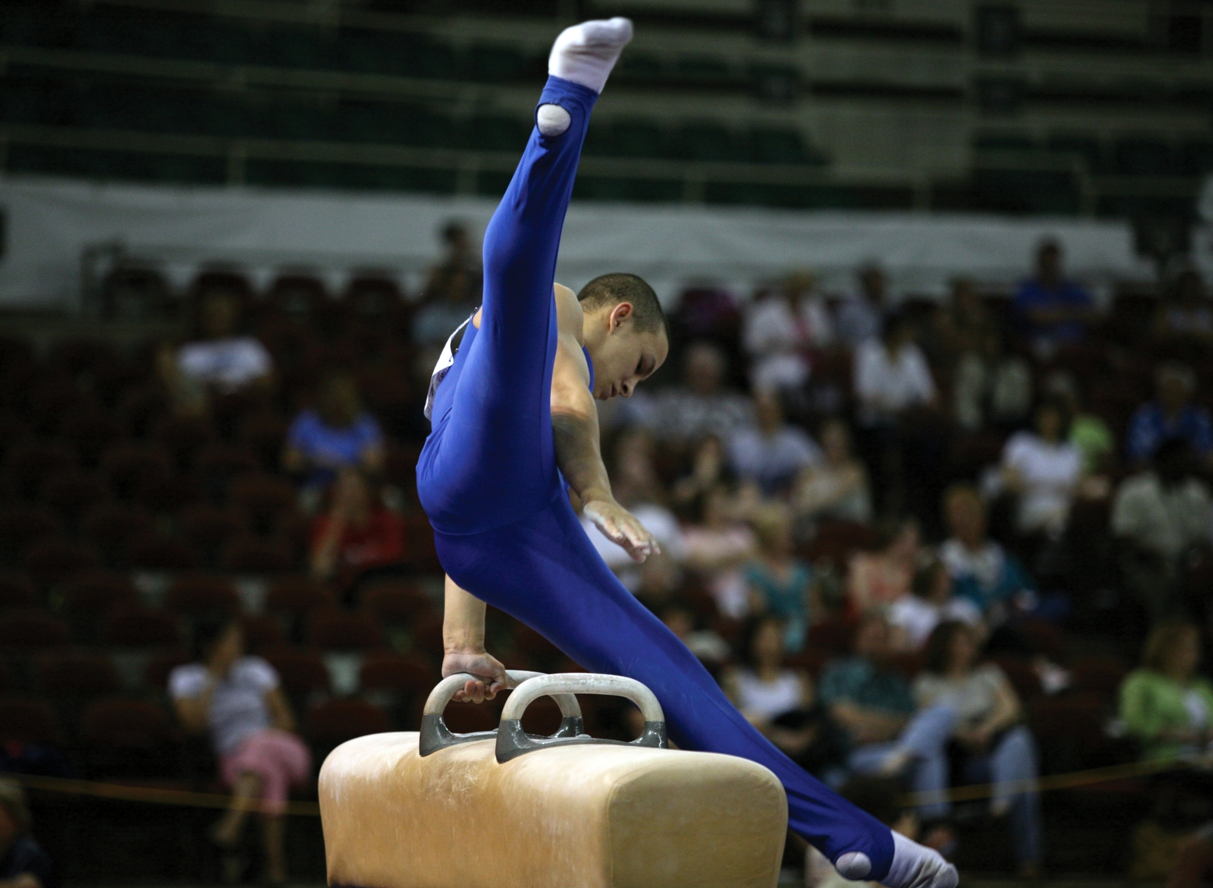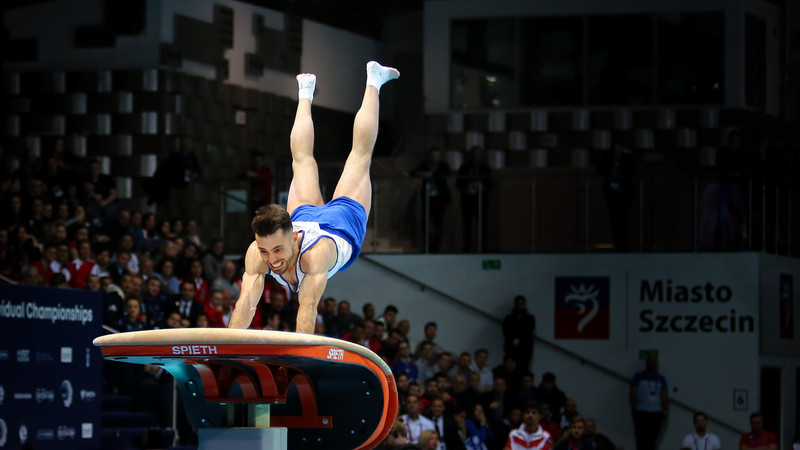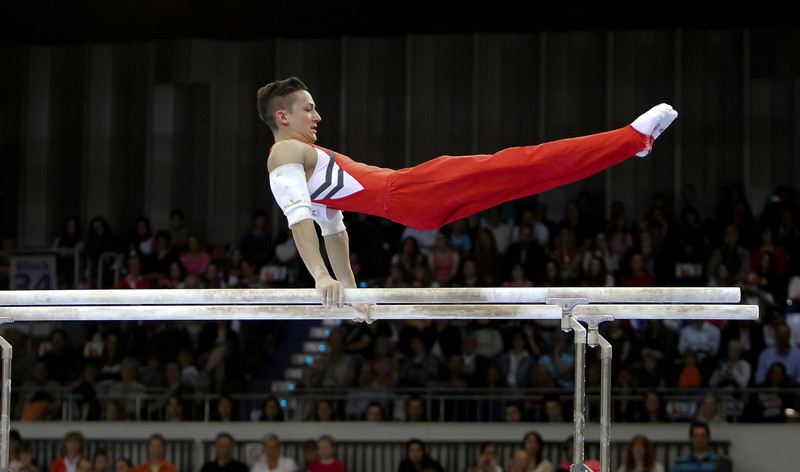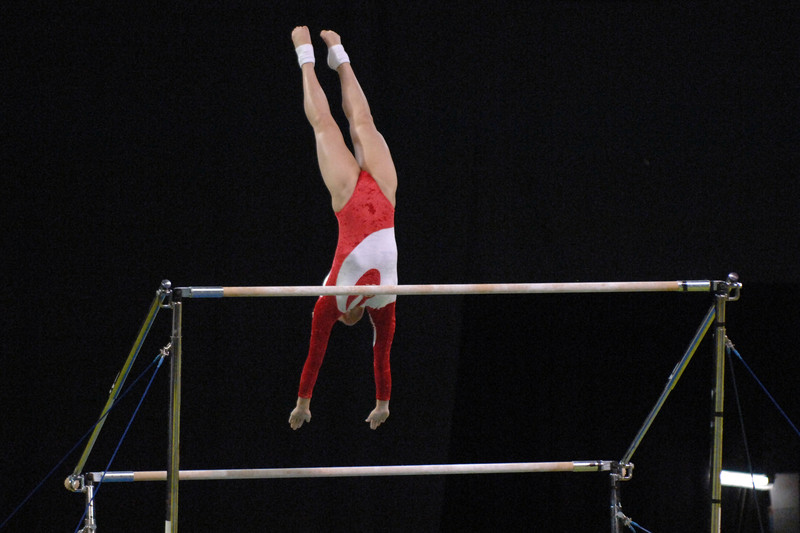Gymnastics, Summer Olympics
Welcome and thanks for visiting...

Olympic Gymnastics: Grace, Strength, and Precision
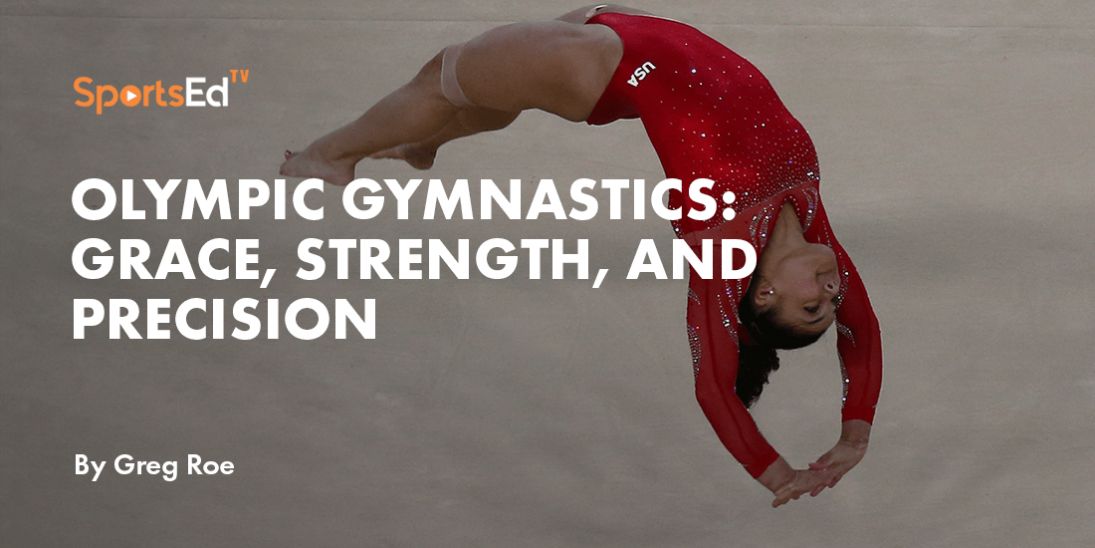
Gymnastics is one of the most captivating and graceful sports at the Summer Olympics. Athletes showcase a blend of artistry, strength, and precision that captivates audiences worldwide.
The history of gymnastics in the Olympics is rich, and the competitions feature a variety of events, rules, and formats. In this article, we will explore the Olympic history of gymnastics, delve into the rules and formats of the competitions, and shed light on how gymnasts qualify for the prestigious event.
Olympic History of Gymnastics
Gymnastics made its Olympic debut at the inaugural modern Olympics in Athens in 1896. Originally, only men competed in gymnastics events, but women's gymnastics was introduced in 1928 at the Amsterdam Olympics. The sport has evolved over the years, with new events and disciplines added to the Olympic program. Currently, artistic gymnastics, trampoline, and rhythmic gymnastics are the three main gymnastics disciplines featured in the Summer Olympics.
Artistic Gymnastics: Men
Artistic gymnastics encompasses a range of events and apparatus for both men and women. The events include:
General Scoring Rules
Each gymnast will have a few minutes to perform a single routine on each of the elements throughout the competition day. Each routine score will be totaled together at the end for a final all-round score. Men will do six events, and women will do four events. Each routine will consist of optional elements that will form the difficulty score that the gymnast can pick from a list of acceptable skills from the Code of Points or rulebook.
Each skill is given a ranking based on how tough it is, with an A being the easiest skill, only worth 0.1 in additional difficulty, to J skills that are the hardest and give the athlete 1.0 additional difficulty. All of the skills in the routine are added together for an overall Difficulty Score.
Other compulsory elements, such as a balance element on the floor or touching all three parts of the pommel horse, will be mandatory, and gymnasts will not gain points for completing them but will lose points for not performing them. The form and overall execution are scored out of 10.00, with the difficulty added for a total of typically around 14-16.0. From that score, deductions are subtracted for each wobble, missed step, accidentally bent arm or leg, and overall any form error throughout the entire routine.
Deductions officially begin once the gymnast presents to the judges at the start and then presents after the routine at the end. For example, World Renowned Gymnast Simone Biles won the floor exercise in the 2023 World Championships with a total of 14.533. All Gymnastics routines on each of the elements below are scored similarly and then added together at the end for a total score for the All-Round.
Men's Specific Events
Floor Exercise
Description: Gymnasts perform a series of acrobatic and dance elements on a 13m x 13m spring floor mat. Routines include tumbles, flips, twists, and dance elements.
Rules:
Judges are looking for quick bursts of controlled power. Athletes have to explode into a powerful tumbling pass form only a few steps and then stick the landing without stepping out of bounds. The athlete must show at least one balance element and flexibility element which are deducted for every step out of place, visible rebalance, and for bent legs and arms during any acrobatic elements such as a handstand.
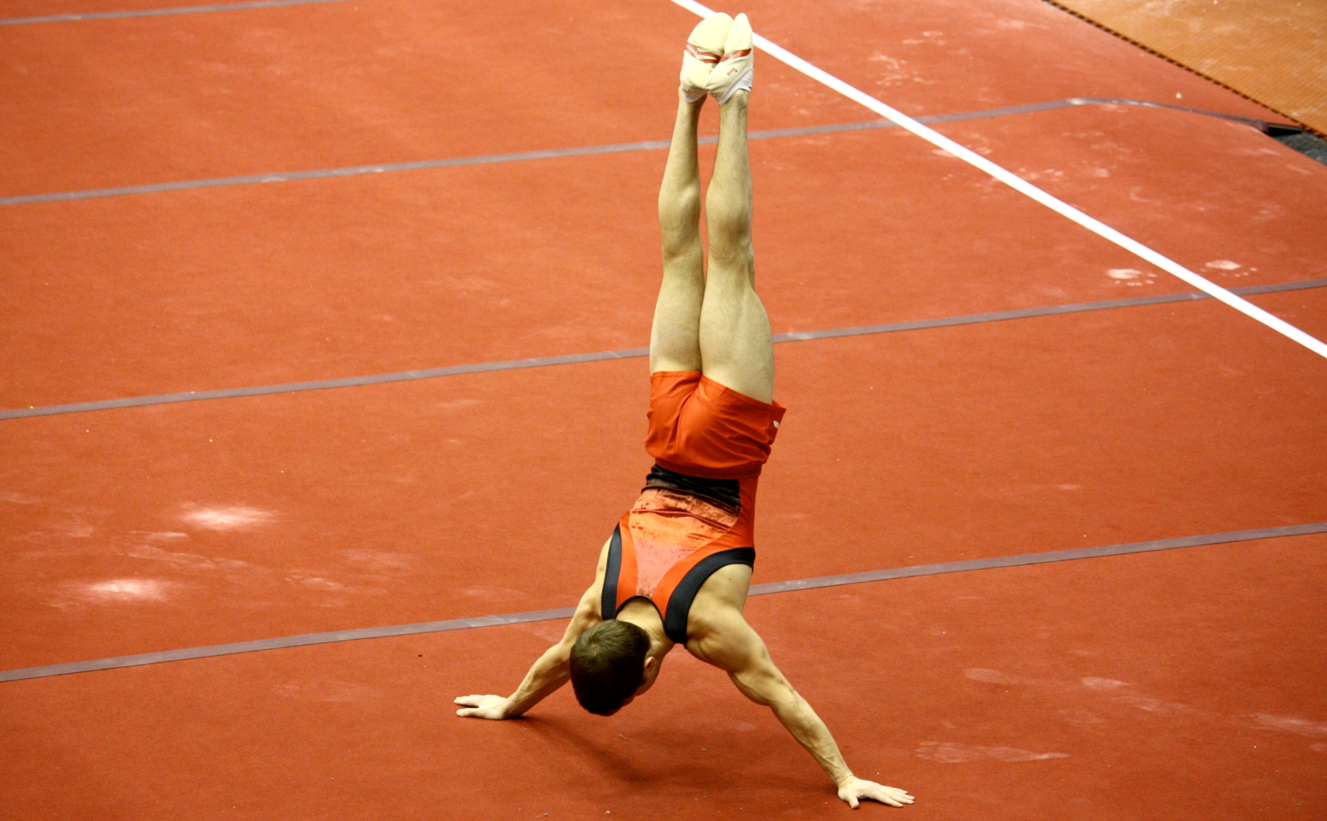
Pommel Horse Description
Gymnasts perform swinging and circular movements on a narrow, wooden horse. The routine involves traveling along the horse's length.
Judges will look for an extended body going around in circles with no hip bend. Athletes will have to travel across the pommel horse as a compulsory part of their routine and stops, pauses or completely falling off of the pommel horse will be deducted accordingly.
Gymnasts will have to do a section of the routine called "Scissors" where they stop their circle motion and split their legs between and under each arm on the wooden handles similar to a pendulum going back and forth and will be expected to get into and out of the Scissors smoothly to get back to the circles. The athlete will need to dismount creatively and stick the landing but can creatively use their arm to hold the balance, unlike any other apparatus.
Rings Description
Gymnasts demonstrate strength and control on two hanging rings. They perform swinging, static holds, and strength-based elements.
Rules: Scoring focuses on the execution of static positions, swing elements, and strength elements. Points are awarded for holding positions with minimal swinging. Athletes will have required strength and swing elements they must perform, such as swinging from a handstand forward and backward back up to a perfect handstand. Virtuosity points are given for slight lifts of the head during strength elements and for making the routine look 'easy' overall.
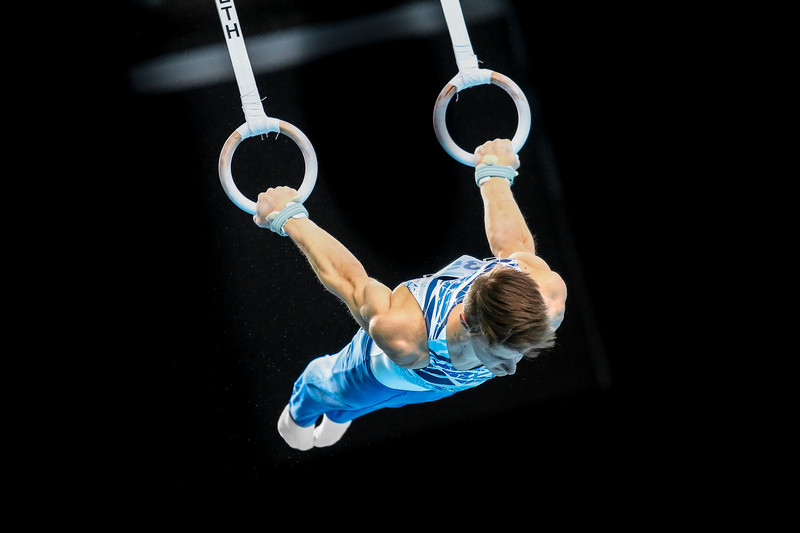
Vault Description
Gymnasts sprint down a runway and perform a springboard jump onto a vaulting table from what is called a “Beat-Board.” They execute various flips and twists before landing.
Judges evaluate the difficulty, execution, and landing of the vault. Gymnasts must adhere to specific body positions and complete a clean landing. Gymnasts will be allowed to simply jump straight onto the beat-board for a forward flip, Cartwheel onto the beat-board to perform a backward flip, or cartwheel on the vaulting table itself doing a half turn early in the skill and landing backward. Each athlete has a preference based on their body type and strengths.
Parallel Bars Description
Gymnasts perform a series of swings, handstands, and release moves between two parallel bars.
Scoring focuses on execution, swing elements, and dismounts. Judges assess body positions, the amplitude of release skills, the dismount, and precision. Athletes will be required to show skills on only one bar, which equates to a test of balance and control. Parallel bars should have a rhythm of sorts, as one skill should flow seamlessly into the next skill.
Horizontal Bar Description
Description: Gymnasts swing around one long bar, performing intricate release and re-grasp elements, as well as twisting and flipping dismounts.
Judges evaluate execution, difficulty, and amplitude. Deductions are applied for form errors and loss of swing or body adjustments that show a lack of control, such as bending the arms to get on the bar on each swing. Athletes will have to do a variety of different positions with their bodies during the swings around the bar and are fighting against centrifugal forces with the tension of the body in these positions. The judges are looking for the athlete's overall ability to fight against the constant outward forces and still perform acrobatic movements, along with a great dismount and stuck landing at the end.
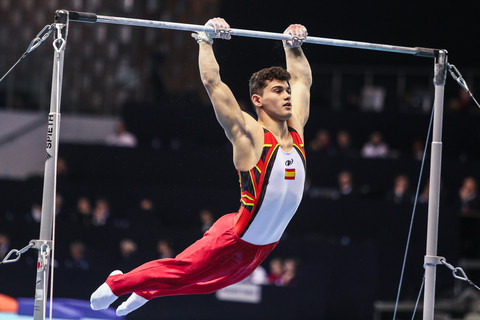
Artistic Gymnastics: Women
Vault Description
Similar to the men's vault, female gymnasts sprint and perform a springboard jump onto a vaulting table, executing flips and twists before landing.
Scoring criteria include difficulty, execution, and the quality of the landing. Form errors and deviations from specified body positions result in deductions. Like the men, the women can enter the vault in a few different ways, explained earlier, based on their preferences.
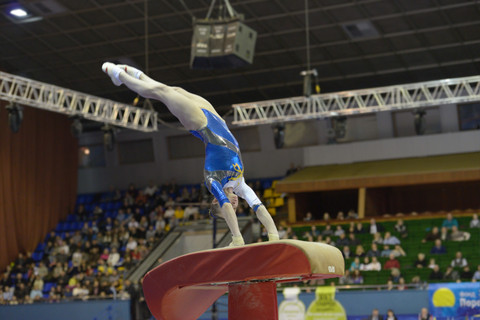
Uneven Bars Description
Gymnasts navigate a set of unevenly spaced bars, performing swings, releases, and transitions between high and low bars.
Judges evaluate execution, swing and bar transitions, and release elements. Form, amplitude, and handstand positions are crucial. Unlike men, women have the added difficulty of swinging around the taller bar without hitting the smaller bar with their legs.
Balance Beam Description
Gymnasts perform a routine on a narrow beam, showcasing acrobatic elements, dance, and balance skills as well as powerful tumbling passes right on the beam similar to those on the floor exercise for their dismount.
Scoring is based on execution, balance, and artistry. Points are deducted for wobbles, falls, and form errors. Virtuosity points are given to gymnasts who, like the men on rings, can look graceful, have a raised head and even smile during their routine.
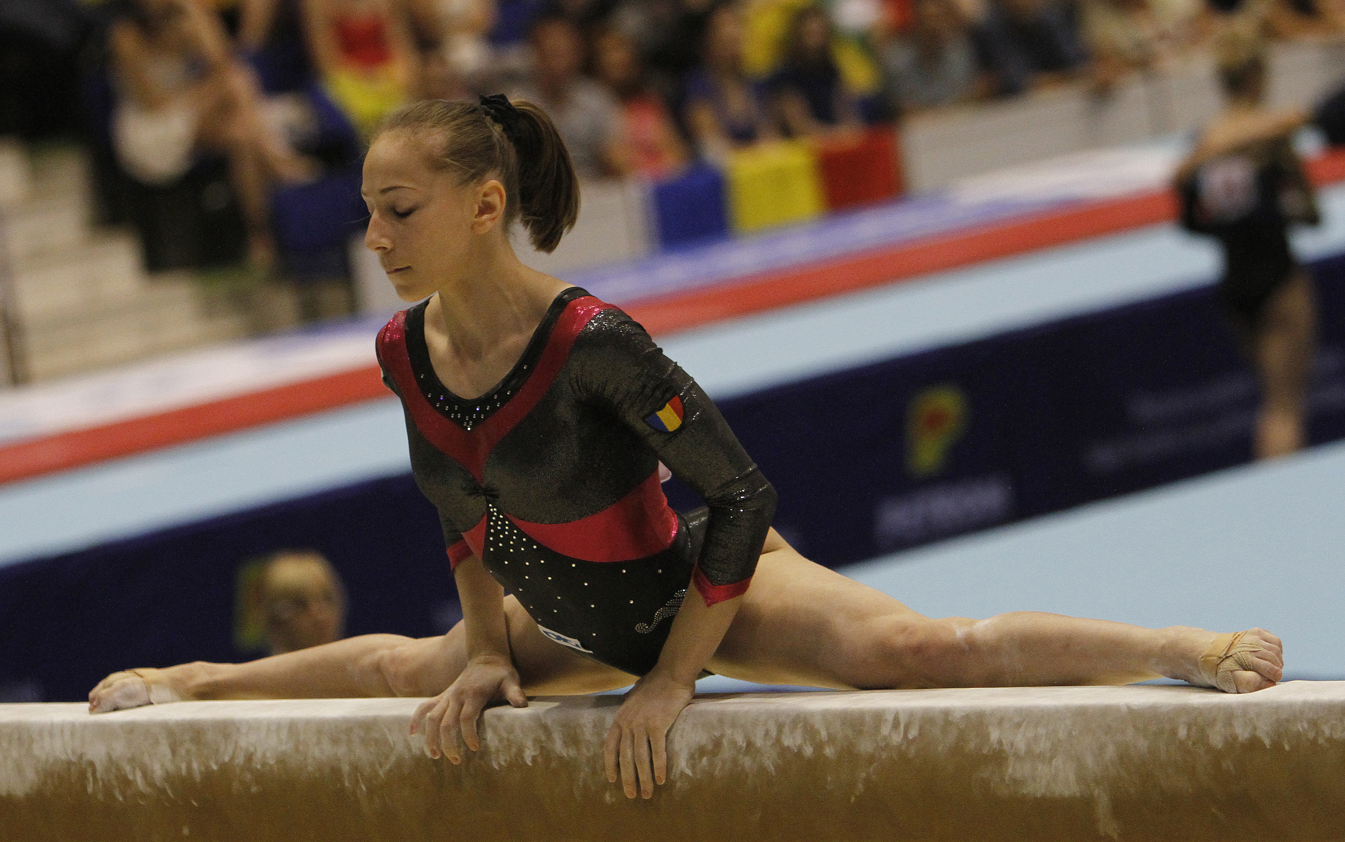
Floor Exercise Description
Similar to the men's floor exercise, female gymnasts perform a combination of tumbling passes and dance elements on a spring floor mat. Unlike men, women have to do their routine and carefully scripted choreography to music. Women are more so judges on their grace, timing to the music, and dance flow compared to men, who are judged more on power and precision.
Rules: Scoring assesses the execution, artistry, and difficulty of the routine. Gymnasts must connect skills with expressive dance that is timed perfectly with the music.
In artistic gymnastics, each event has specific rules and scoring criteria. Gymnasts perform routines, which are judged based on difficulty, execution, and artistry. The scores are cumulative, leading to the determination of medalists in an all-around score.
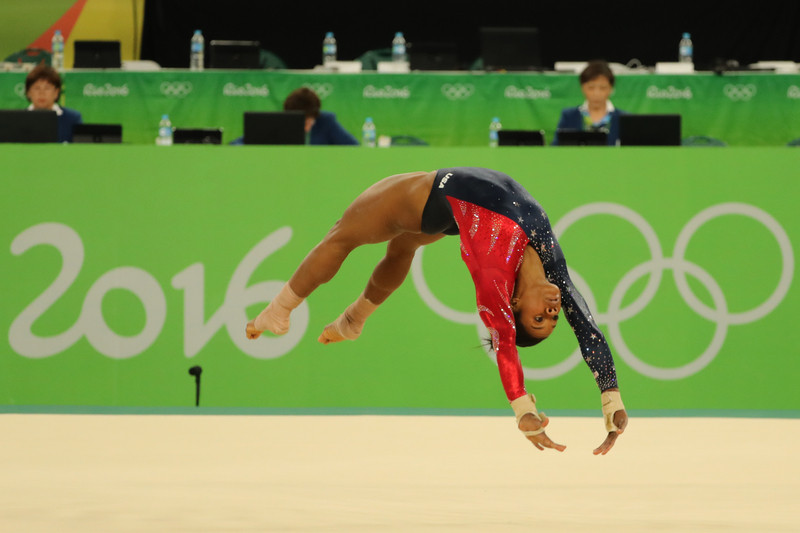
Rhythmic Gymnastics
Rhythmic gymnastics was exclusively a women's sport, but recently, Japan has been developing a male version of the sport. Its roots began in France in the mid-1800s, and since then, it has evolved from a creative exercise methodology to a competitive sport by 1963. Individual Rhythmic Gymnastics became an Olympic sport in 1984, and group competition was added to the Olympics in 1996. Gymnasts perform routines with apparatus such as the hoop, ball, clubs, and ribbon. Scoring in rhythmic gymnastics emphasizes both technical execution and artistry. Judges evaluate elements like body movement, flexibility, and coordination with the apparatus.
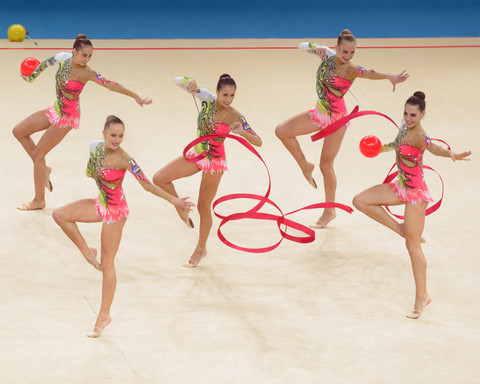
Trampoline
Trampoline is scored significantly differently from Artistic Gymnastics or Rhythmic. Athletes will have two routines to compete that must have exactly 10 skills with no additional bounces before, after, or during the routine. The total score of those two routines will determine if the athlete will get into finals, where they will have one final chance to do a routine to be crowned the winner.
Until recently, a trampolinist’s first routine was a compulsory routine with six skills being typically single flips, and athletes were aiming to go as high as possible and be as clean in the air as possible with perfect leg, arm, and body position and not worry about difficulty. The athlete would have to land at least once on their back or stomach, and all other skills could be on their feet.
Only four out of the ten skills were given difficulty scores, so by doing more than only two difficulty skills. The athlete would essentially make their routine harder and score less because they are not being given points for the additional difficulty. The second routine would be what is called an "Optional" routine, where the athlete can do any ten skills they would like with as much difficulty as possible without falling off the trampoline.
Like in Gymnastics, each skill is given a point value in the Code Of Points, and the total points are added up for a difficulty score. There is an execution score that is added up by 6 judges who deduct points for every leg separation, arms flail, bent body on the landings, or other uncontrolled movements. Positions in the air, like a Tuck or Pike, will need to be "Kicked-Out" at noon, or there will be a deduction.
Athletes will also be given a score based on “Time Of Flight,” where force plates are put under the legs of the trampoline and measure when the athlete is in contact with the trampoline and when they are not. The total length of the routine, subtracting the time in the bed, which is usually around 0.3 seconds per jump, will give the athlete’s Time Of Flight, which is added to the difficulty and execution scores.
Horizontal Displacement has also been added with technology that can measure how far an athlete travels from the center of the trampoline. It used to be that whenever the athlete landed a skill outside of the red box, it was a deduction, and now motion capture computers can do it. Now, both routines are considered optional in an attempt to make the sport more appealing to the audiences, and there are no compulsory routines. Now, both Optional routines are added together for a score, and then the top 8 or 10 make it to finals for a third Optional routine scored in the same manner.
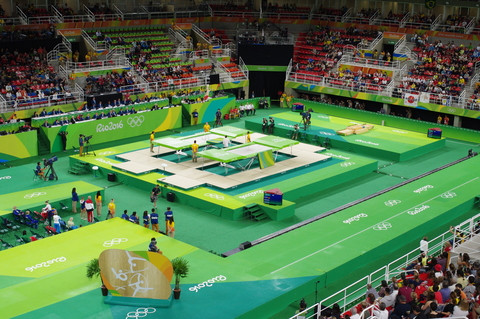
Freestyle Trampoline
Recently a new version of trampoline has emerged from the backyards of homes all over the world called Freestyle Trampoline. Freestyle Trampoline is the action sports version of Traditional Trampoline, where athletes train themselves in peer-to-peer coaching and have a completely different set of rules for their competitions.
Scores in Traditional Trampoline are much more objective and the majority of athletes are confined to a small subset of skills that all have historically proven to be easier to do and score well. This has overall led to a stagnation in viewership of Traditional Trampoline and gave room for Freestyle Trampoline to emerge.
Freestyle trampoline is much more subjective, and athletes can rotate on all axes, which traditional athletes are not allowed to do. Routines or “Combos” in Freestyle Trampoline are between 2-5 skills and, on average, are 3 skills in length, making the skills much more spectacular as athletes do not need to stay in control for 10 entire skills, which forces them to pick easier skills just to get through the routine. Freestyle Trampoline scores 10 points for Creativity: How unique were the skills compared to the other athletes? Did you invent anything the judges had never seen before?
There are 10 points for Difficulty: How many overall flips and twists and unique positions were there for the entire combo? Finally, there are 10 points given to execution: Was the athlete in the middle? Did they have the right head position, indicating they knew where they were at all times, and did they control each skill overall?
There is also a landing bonus given at the end of the routine, as many athletes purposefully land the last skill, not their stomach, back, or hands and knees. Athletes have 2 attempts to complete their Combo, and the top ten for men and women move to the semi-finals. The athlete then has to do another combo but has to use completely different skills and can't repeat any of them from the first combo. The top five then move on to Finals and must perform one more combo to determine the winner.
Summer Olympics Team and Individual Competition Formats
Team Competition
In artistic gymnastics, each team comprises multiple gymnasts who compete in all events.
Team scores are calculated based on individual performance, with the highest-scoring teams winning medals.
Individual Competition
Artistic gymnastics, trampoline, and rhythmic gymnastics also have individual competitions.
Gymnasts compete in their respective events and are awarded individual medals based on their scores.
Preliminary Competitions
In both team and individual competitions, preliminary rounds are held to determine the finalists. Gymnasts must perform well in these preliminary rounds to advance to the finals. The top scorers in each event earn a spot in the finals.
Scoring in Olympic Gymnastics
Degree Of Difficulty Score (D.D-Score)
The Degree Of Difficulty Score, or D.D-Score, assesses the complexity and difficulty of a gymnast's routine. It considers the skills, elements, and connections performed. The more challenging and intricate the routine, the higher the D.D-Score.
Gymnasts plan their routines with specific elements, each of which has a predetermined difficulty value. The total D.D-Score is the sum of the values assigned to these elements. Difficulty values are predetermined by the International Gymnastics Federation (FIG) and are based on the element's complexity.
It's important to note that gymnastics judges undergo rigorous training to ensure consistent and accurate scoring. They work together to evaluate routines and apply the rules and deductions fairly. The combination of the D-Score and E-Score aims to reward gymnasts who perform both difficult and flawless routines, making Olympic gymnastics a thrilling and precise sport to watch.
Qualifying for Gymnastic Competitions
Qualifying for the Olympic gymnastics competition is a highly competitive and rigorous process. Gymnasts must meet specific criteria set by their respective national governing bodies to be eligible for selection to their country's Olympic team. These criteria usually include performance standards and participation in national or international competitions.
To find information on gymnastics qualifying for the Olympics, one can check the official website of the International Gymnastics Federation (FIG) or their national gymnastics association. Additionally, the International Olympic Committee (IOC) website provides comprehensive information on the qualification system for all Olympic sports.
Gymnastics in the Summer Olympics is a captivating showcase of human strength, artistry, and precision. With a rich Olympic history, a diverse range of events, and rigorous qualification processes, gymnastics remains a highlight of the Games.


